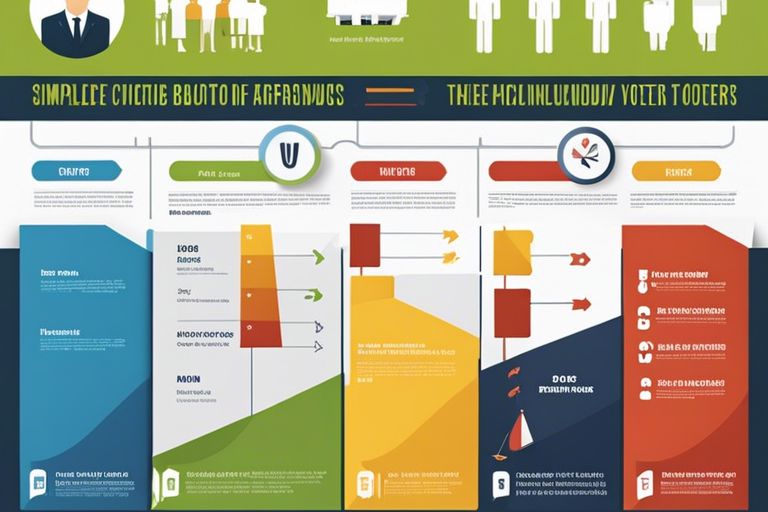Just when you thought voting couldn’t get any more complex, you come across the concept of indirect voting. This guide will help you navigate the necessarys, breaking down the process into simple, digestible parts. Whether you’re preparing for an election or just curious about how decisions are made behind the scenes, this article equips you with the knowledge to understand indirect voting and its significance in shaping your representation. Let’s simplify this topic so you can approach it with confidence and clarity.
Understanding Indirect Voting
A fundamental aspect of modern democracies, indirect voting is a method where voters elect representatives to make decisions on their behalf, rather than voting directly on issues. This approach aims to streamline decision-making processes and allows for a more manageable system in large populations.
Definition of Indirect Voting
The system of indirect voting involves selecting individuals, such as delegates or representatives, who will then cast votes on various matters or policies. This mechanism helps in ensuring that citizens’ voices are represented through elected officials.
Historical Context
With roots dating back to ancient civilizations, indirect voting emerged as a practical solution for representation in larger communities. Early examples can be traced to the Roman Republic, where elected officials represented the interests of the populace, shaping the way modern democracies function today.
Historical developments over centuries influenced how indirect voting systems evolved. From the representative assemblies of medieval Europe to the constitutional frameworks found in contemporary democracies, the principle of having elected individuals make decisions reflects the need for manageable governance. This evolution underscores the challenges of direct democracy, especially as societies grew in complexity and size.
Importance of Indirect Voting in Democracies
Understanding the significance of indirect voting is crucial for grasping how democratic governance operates. It facilitates more efficient decision-making and ensures that elected representatives consider the diverse needs and opinions of their constituents.
Contextually, indirect voting plays a critical role in maintaining stability within democracies. It bridges the gap between citizens and their government, fostering a system where informed representatives deliberate on policy matters. This structure not only enhances accountability but also encourages civic engagement, empowering you as a voter to influence decisions indirectly through your representatives.
How Indirect Voting Works
Assuming you are new to the concept of indirect voting, it’s imperative to understand its fundamental mechanics. In indirect voting, voters first select representatives, who then make decisions or choose candidates on your behalf. This method is particularly prevalent in larger elections where it is impractical for everyone to vote directly on every issue.
The Process Explained
Any voter begins by participating in an election where they choose a delegate or representative. This representative is responsible for casting a vote or making decisions that reflect the preferences of their constituents. The process can involve multiple layers, depending on the specific rules governing the election.
Key Players Involved
Indirect voting relies on several key players, including voters, elected representatives, and sometimes electoral committees. Each plays a crucial role in ensuring that the voice of the electorate is effectively represented through the delegate system.
Involved in this process are voters who express their choices at the polls, representatives who communicate these choices in decision-making bodies, and committees that often oversee the process to ensure fair play. Each player contributes to a system designed to streamline decisions while still incorporating the electorate’s views.
Differences from Direct Voting
From the outset, the most significant difference between indirect and direct voting lies in how votes are cast and counted. In direct voting, you vote directly for a candidate or an issue. In contrast, indirect voting involves a representative who acts on your behalf, which can introduce additional layers of decision-making.
Players in indirect voting may also have varying levels of influence compared to those in direct voting. While you directly shape the outcome in direct voting, in indirect voting, the elected representatives you choose ultimately have the authority to make final decisions. This can create a distance between your preferences and the actions taken. Understanding these distinctions helps you navigate the electoral process more effectively.
Types of Indirect Voting Systems
Despite the complexities surrounding voting, you can gain a clearer understanding by exploring the various types of indirect voting systems. Each system has its own unique characteristics, functioning in distinct political environments. Here’s a breakdown:
| Type of Indirect Voting | Description |
|---|---|
| The Electoral College | A body of representatives that elects a candidate in the U.S. presidential elections. |
| Parliamentary Systems | Members of parliament are elected by the public to represent them. |
| Delegate-Based Voting | Delegates are chosen to vote on behalf of a larger group. |
| Proportional Representation | Seats in the legislature are allocated based on the percentage of votes each party receives. |
| Hybrid Systems | Combines elements of different voting systems for broader representation. |
The Electoral College
For U.S. presidential elections, the Electoral College plays a crucial role in determining outcomes. Voters don’t directly choose the president; instead, they vote for a group of electors pledged to support their candidate. These electors then cast the official votes for the president. This system can sometimes result in a candidate winning the presidency without the majority of popular votes, adding complexity to the electoral process.
Parliamentary Systems
Indirect voting is prominent in parliamentary systems, where you elect representatives to the parliament, which then forms the government. These representatives work on your behalf, making decisions and laws based on their constituents’ needs.
Systems in parliamentary frameworks usually operate with a party-based approach, where political parties gain seats based on the proportion of votes they receive. This encourages coalition-building and compromises, allowing for broader representation in government. You may also notice that members of the parliament, once elected, may select the prime minister from among themselves, further indicating the indirect nature of this system.
Delegate-Based Voting
Systems with delegate-based voting involve selected delegates who represent a larger group during the voting process. These delegates are often chosen through local or regional elections, allowing constituents to have a voice in selecting their representatives.
This method often lends itself to organized groups or conventions, reminding you of the significant role these delegates play in shaping decisions that reflect the collective will of the voters they represent. As a result, you can see its application in various scenarios, such as party conventions or community decision-making processes.
Advantages of Indirect Voting
Now, let’s explore the key advantages of indirect voting that make it a valuable system for many democracies around the world.
Representation for Minority Voices
Representation in indirect voting systems allows minority voices to be heard more effectively. By selecting representatives who can advocate for specific interests, these groups often find a platform to express their concerns and needs, which might otherwise be overlooked in a direct voting system.
Stability in Governance
Stability in governance is another significant advantage of indirect voting. This system often leads to the election of experienced leaders who can navigate complex political landscapes, reducing the likelihood of sudden shifts in policy and maintaining continuity in government operations.
With indirect voting, you benefit from a more measured approach to governance. It encourages representatives to engage in thoughtful deliberation and coalition-building, which can result in coherent policies that reflect a broad consensus rather than the whims of a transient majority. This stability fosters an environment conducive to long-term planning and progress.
Minimization of Voter Manipulation
Voter manipulation is minimized in indirect voting systems, as the complex nature of representation reduces the impact of misinformation or emotional influences on voters. This fosters a more informed electorate that relies on representatives to make decisions based on facts and research.
For instance, because your representatives are typically more informed and experienced about issues at hand, they are less susceptible to emotional appeals or manipulative tactics that can sway direct voters. This creates an environment where deliberation and sound judgment take precedence, ensuring that policy decisions are grounded in reality rather than sensationalism.
Disadvantages of Indirect Voting
Many people believe that indirect voting has its drawbacks, making it important for you to understand these limitations as you participate in the democratic process. In this section, we will explore some of the disadvantages associated with indirect voting, including complexity, potential for disenfranchisement, and the risk of disconnection between voters and elected officials.
Complexity and Confusion
Confusion often arises with indirect voting due to its layered process. You may find it challenging to understand how your vote translates into a final decision, as it doesn’t directly select the official responsible for your concerns. This complexity can lead to misinterpretation of how votes impact outcomes, leaving you feeling disconnected from the electoral process.
Potential for Disenfranchisement
With indirect voting, there exists a risk of disenfranchisement, where your choices may not accurately represent your views. When votes are filtered through intermediaries, some individuals may feel their voices are marginally heard or entirely ignored. This can result in a sense of alienation from the democratic process, making it vital for you to stay informed and engaged.
This disenfranchisement can be particularly pronounced if you belong to a minority group or hold unconventional opinions. If the individuals you elect to represent you fail to advocate for your interests, your concerns may be overlooked entirely. You may feel that your vote has less weight in decision-making processes, leading to a growing skepticism towards government representation.
Risk of Disconnection Between Voters and Elected Officials
Indirect voting can create a risk of disconnection between voters and elected officials, as your representative may lose touch with your immediate needs. As a voter, you might notice that elected officials prioritize the interests of larger voting blocs rather than addressing your concerns directly. This detachment can ultimately undermine your faith in the political process.
The disconnection may be exacerbated by the layers of representation involved in indirect voting systems. If representatives prioritize personal or political agendas over the needs of their constituents, you could become increasingly disillusioned with your ability to influence change. This emphasizes the importance of engaging with your representatives to ensure your voice is heard in the democratic landscape.

Practical Examples of Indirect Voting
Once again, let’s explore how indirect voting functions in various real-world contexts. This will help you better understand its application and significance in governance.
United States Presidential Elections
Elections in the U.S. are a prime example of indirect voting through the Electoral College system. Voters cast their ballots not directly for presidential candidates but for electors pledged to those candidates. These electors then officially cast the votes that determine the President and Vice President, making the process a vital demonstration of indirect representation.
The United Nations and Indirect Representation
United Nations decision-making involves a form of indirect representation, as member states appoint delegates to represent their interests. These delegates participate in discussions and decisions that impact global governance, exemplifying how countries use indirect voting to influence international policy.
To probe deeper, understand that this system allows for a diverse range of perspectives, as delegates may represent large groups of nations or specific interests within their countries. Indirect representation in the UN helps to balance power among member states and ensures that even smaller nations can contribute to global discussions, influencing the international agenda indirectly through their chosen representatives.
Indirect Voting in Local Governments
Examples of indirect voting can also be seen in local governments, where councils or boards are elected to represent the population. Residents vote for these representatives who then make decisions on behalf of the community on vital issues like zoning, budgets, and public services.
It is important to note that this structure allows for a streamlined decision-making process. When you elect a council member, you’re placing your trust in their ability to understand your community’s needs and make informed decisions. This delegation of authority is a key aspect of indirect voting, empowering representatives to tackle local issues efficiently while still being accountable to the voters who elected them.
Final Words
Now that you have a foundational understanding of indirect voting, you can confidently navigate this complex electoral process. Remember that your participation in democracy is vital, and knowing how indirect voting works empowers you to make informed choices. As a beginner, continue to educate yourself and engage with your community to enhance your understanding and influence in future elections. Every vote matters, and your informed decision could shape the outcome significantly.
FAQ
Q: What is indirect voting and how does it work?
A: Indirect voting is a voting system where voters do not vote directly for a candidate or a policy. Instead, they elect a smaller group of representatives, known as electors or delegates, who then make the final decision on behalf of the voters. This method is often used in larger elections to streamline the voting process and is designed to balance the influence of different regions or groups within a larger electorate. An example of indirect voting is the Electoral College in the United States, where citizens vote for electors who then cast official votes for the president.
Q: Why might a community or organization choose indirect voting over direct voting?
A: A community or organization may choose indirect voting for several reasons: it can simplify the decision-making process in large groups, ensure that all voices are considered through representative electors, and help prevent potential chaos that could arise from direct voting among a massive number of individuals. Additionally, indirect voting can encourage more informed choices, as electors often have more information and expertise about the candidates or issues at stake. This system can also enable better representation of diverse perspectives, particularly in larger jurisdictions.
Q: How can I effectively participate in an indirect voting system?
A: Participating in an indirect voting system begins with thoroughly educating yourself about the candidates or electors you will be voting for. Look for platforms where electors share their views and intentions, allowing you to choose those who align with your preferences. It’s crucial to engage in discussions within your community to understand different viewpoints and ensure your vote reflects your beliefs. Stay informed about the entire electoral process, including deadlines for casting your initial votes and the role of the electors. Your participation in the initial voting stage is crucial, as these votes determine who will make the final decisions on your behalf.







